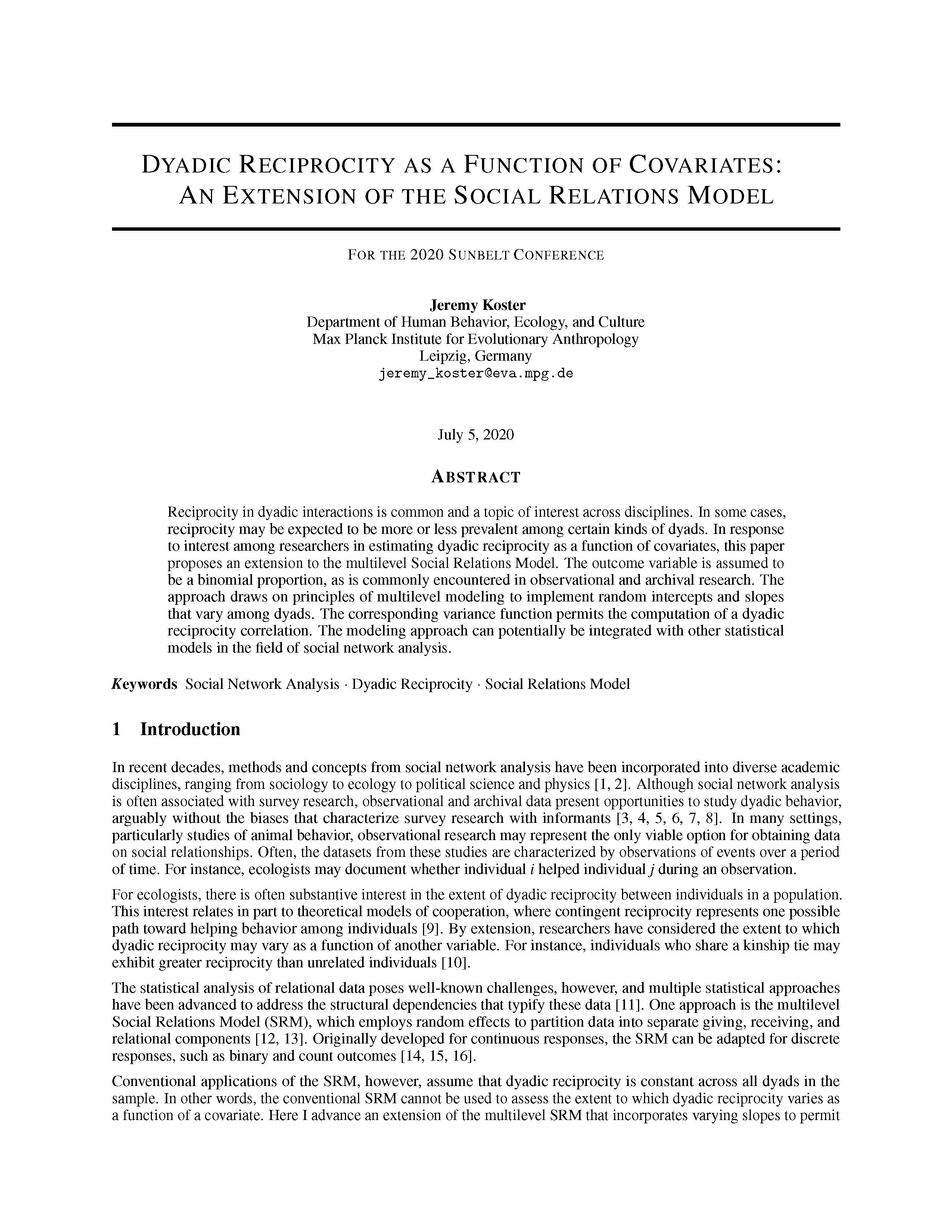
Dyadic Reciprocity as a Function of Covariates: Extensions of the Social Relations Model
Jeremy Koster
Evolutionary hypotheses assert that reciprocal transfers of resources within dyads can be an effective method for buffering variance in resource flows. A large body of research on social networks in human and animal societies supports the conclusion that reciprocity within dyads is common. In some cases, however, there have been assertions that the degree of reciprocity will vary as a function of covariates. For instance, there is disagreement about the extent to which reciprocity should be higher or lower among close kin than among strangers. Methodologically, statistical approaches to examine this question have not been thoroughly developed, and analyses have tended to default to models that violate principles of statistical endogeneity.
This talk presents extensions of the multilevel Social Relations Model that allow the dyadic reciprocity correlation to vary as a function of covariates. The first extension is appropriate for categorical covariates, such as distinctions between same-sex versus opposite-sex dyads. In this approach, the dyadic effects are assigned to separate variance-covariance matrices, permitting estimations of separate reciprocity correlations. The second approach is appropriate for either continuous or categorical covariates, and it relies on the assumption that dyadic reciprocity is positive. As in the parameterization introduced by Snijders and Kenny (1999), dyadic reciprocity is estimated via the implementation of a symmetric varying intercept. In this extension, an additional random effect, a varying slope on the covariate of interest, is added to the model. Using standard methods for calculating variance functions, the dyadic reciprocity correlation can then be estimated for any particular value of the covariate.
The methods are applied to data on inter-household food sharing in a small Nicaraguan village. This case study shows that there are modest but perceptible differences between reciprocity among kin versus non-kin (a categorical covariate) and that reciprocity increases modestly among families that spend relatively more time together, as measured via behavioral observation methods.
The models are estimated using RStan statistical software, and model code is presented briefly as part of the presentation. The presentation primarily focuses on the Social Relations Model for count data, as estimated with a Poisson link function. Considerations for extending the approach to dichotomous and continuous outcomes will be introduced. 
← Schedule

